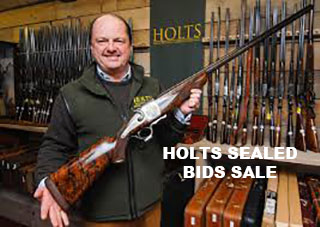I have been frequenting gun auctions since the late 1990s and writing about them for the sporting press since 2003. Over those two decades much has changed.
It used to be accepted that attendance at the viewing days and the auction day itself was essential. Catalogues were sparsely illustrated and descriptions deliberately brief.
Much sold at auction was unsuitable for the general public. The auction was largely the preserve of the Trade and some specialist collectors, who invariably had assistance from a trusted expert, retained for the purpose of advising on technicalities.
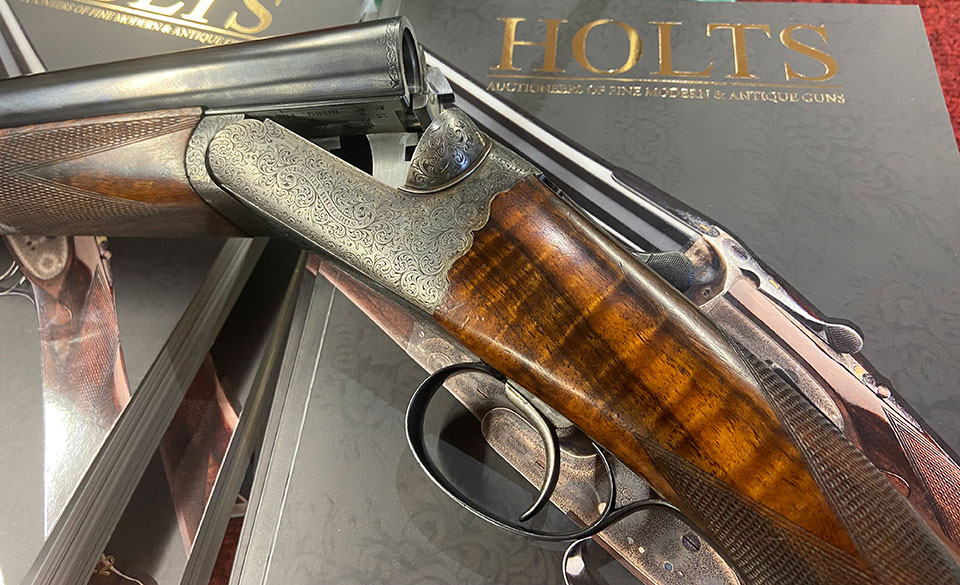
The internet did not have a significant influence on auctions back in the early 2000s. However, it has since transformed them. Today, nicely photographed and described guns appear on the websites of every auctioneer, along with bore dimensions, minimum wall thicknesses, the age of the gun, provenance and other interesting facts.
Bidders who once recoiled from the idea of bidding on a gun that they had not closely inspected, now routinely bid thousands of pounds on guns they have seen merely as on-line images.
In short, auctions have become internet-driven retail environments. People bid on-line for old guns; as they have become used to buying everything on-line. Internet shopping is the modern way.
A question I am often asked by customers is “Should I buy at auction, where the prices seem a lot lower than they do in my local gun shop?”
My first response is the age-old cliche that governs buying at auction: Buyer Beware.
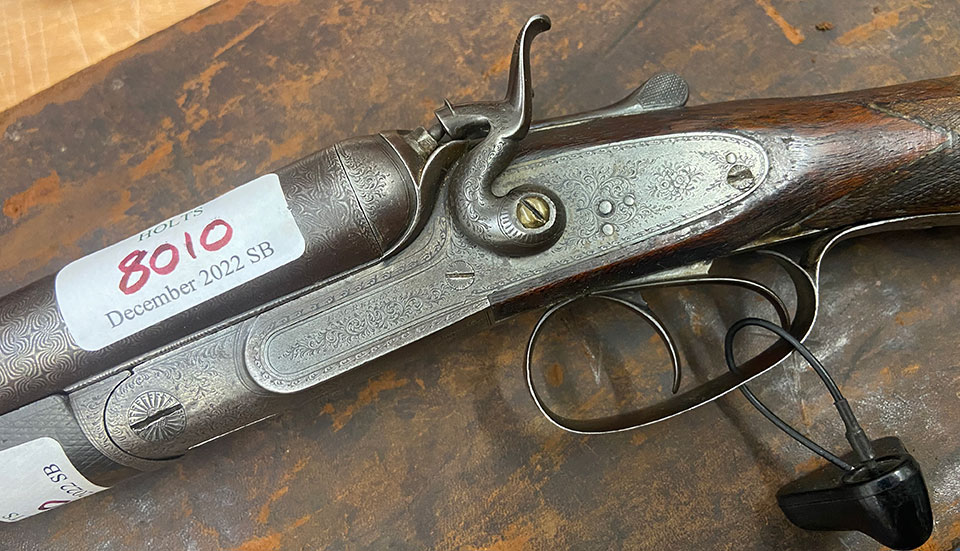
Unlike a retail environment, where the seller has a duty to the customer to sell something fit for purpose and with some expectation that it will work and be reliable, auctions sell everything ‘as seen’ with no come-back. You see it, you bid what you think it is worth, if you win the lot; you bought what you saw.
If it turns out to be no good, that was your look-out. Buyer’s remorse is no argument. As long as the description was not an outright lie, you are stuck with it.
In practice, if the auctioneer says the gun has 25” barrels and it turns out to have 24” barrels, you can claim misrepresentation and expect a refund. If it has the described 25” barrels but you later find out they were shortened from 30” and the gun patterns really badly, bad luck; there is no comeback.
If the gun has a single-trigger and it doesn’t really work, but you don’t realise it doesn’t work and buy it in ignorance, bad luck, the onus was on you to appraise the gun and its acceptability to you as a purchase in the state it was sold; not the responsibility of the auctioneer to test and vouch for the functionality of the gun.
Essentially, the auctioneer is merely an agent to facilitate the sale of an item from one person to another, for which he takes a fee. He is not a vendor himself.
This might seem unfair, given the modern expectation for unquestioned returns policies and generous consumer rights. However, auctions are traditionally where the Trade buys items unsuited to retail in their current state. That is why they are often ‘cheap’.
A gun which, to a professional, has the potential to become a money earner, if he applies his specialised knowledge and skills to restoring it, is merely a gun that doesn’t work to a layman.
the lure of those prices is undeniably strong
Still, the lure of those prices is undeniably strong. The headline ‘sold’ figures in past catalogues look so tempting. Sportsmen seeing a photo of a nice side-lock with a very low price next to it assume it is just as good as the one in the local gun shop at three times the figure. It almost never is.
A quality British gun can comfortably last four or five generations of shooting, if reasonably well cared for. However, hundred-year-old guns have been around long enough to experience wear, neglect abuse and poor workmanship.
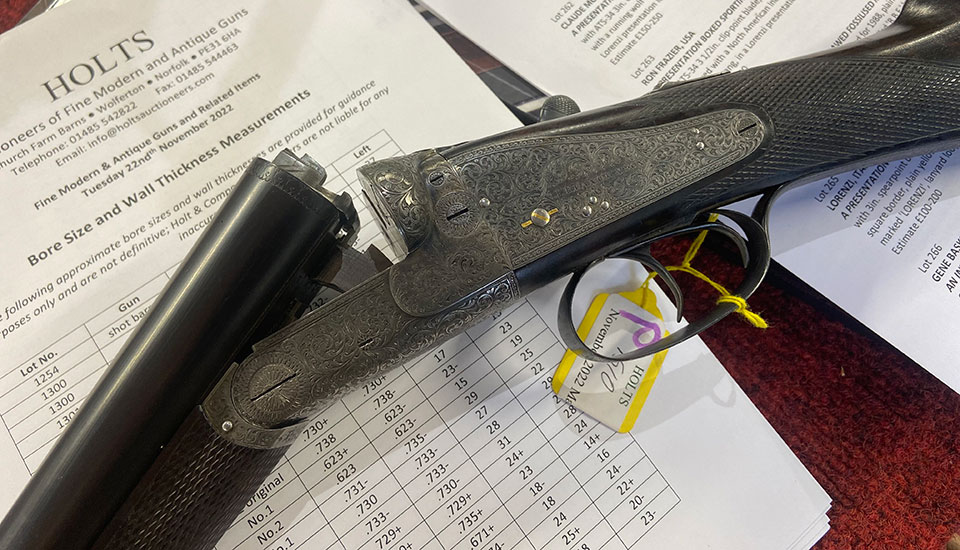
Barrel condition is one reason many good-looking guns are in auctions rather than gun shops. A photo cannot tell you how enlarged the bores are. Nor can it tell you how thin the barrel walls are. When you consider the cost of a new set of barrels from Purdey is over £30,000, it becomes obvious that barrel condition is a huge factor in determining the value of a used one.
The cost of gun-smithing is also a consideration. Many guns in auction will not have been ‘prepared for sale’, they will simply be as they arrived; perhaps from the back store of a gun shop or the cabinet of a deceased shooter.
clean, service and tightening to a loose gun can run to £300.
A proper strip, clean, service and tightening to a loose gun can run to £300. If the rib is loose, add £300 and £300 to re-black the barrels once the work is done. An apparently minor issue with ejector timing could be a badly repaired limb that requires new parts. An intermittently non-firing single-trigger could just be worn out. Ejectors and single-triggers can be time-consuming money pits to engage with.
Remember, many guns like this, with problems the professionals have deemed unfit for use and uneconomic to continue trying to repair, are put into auction as a means of disposal.
So far, for an article on buying guns at auction, this piece might appear more like a warning not to! However, it is important to make clear the pitfalls and explain why some guns are in auctions.
It is possible to buy very good guns at auction; sometimes at a lesser price than you might expect. You just need to learn how to sort the good from the bad.
To be a successful auction buyer you need either knowledge, or a person with that knowledge to advise you. It is important to know one’s limitations.
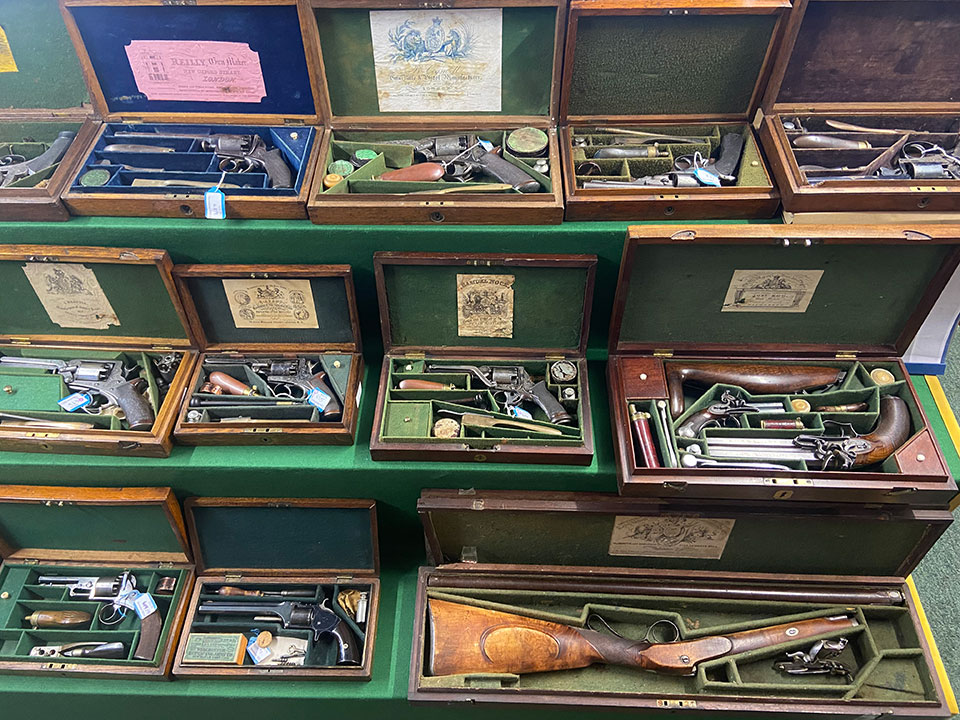
I have owned an old Land Rover for fifteen years. I like to think I know a little about the vehicle.
However, I would not go to a car auction and buy one without engaging the services of a bona fide expert in old Land Rovers. I simply lack the genuine expertise necessary to play that game. Old guns, are the same.
The auction is not an environment for the risk-averse. Even the qualified and experienced sometimes get it wrong. That invariably costs money. You have to be phlegmatic enough to accept that as a consequence of being in the game.
Auctioneers have worked hard to make buying a retail experience and often achieve prices that exceed what a retailer would ask. A bidding frenzy on the day can inject momentum and that can inflate prices; especially when you add the buyer’s premium and VAT .
The bottom line of your invoice can go up by 30% or more
The bottom line of your invoice can go up by 30% or more when it is all added up. Many people don’t calculate that until the bidding is over.
Despite the caveats I have listed so far, auctions can be a good source of guns. A big catalogue places a lot of guns on the table to be sold at one time and there are often things worth having at prices lower than usual.
Some important collections are sold through auction houses so auction catalogues often contain guns that would never appear in gun shops.
Auctions can be fun but they are risky. I’d suggest attending a few with a more experienced friend before trying your hand as an active buyer.
Aside from the prospect of finding and buying some interesting guns, the auction viewing room is a place of education. Rarely will you see such an array of different guns in one place and have the chance to handle and inspect them.
But be warned, once you start getting involved in auctions, they can become dangerously addictive!

Here is a list of things to know before you bid and things to do before you bid.
Things to Know
You are bidding against professionals.
The gun may be in the auction because it has ‘issues’.
Bidding excitement can entice buyers to pay more.
You have to pay the auctioneer a commission.
You have to pay VAT on the commission.
If you don’t like what you buy, you can’t take it back.
The low estimate is the reserve.
The high estimate is not a limit.
You will need the right licence to buy a shotgun.
Bidding on-line for guns you have not inspected is risky.
Things to Do
Calculate your highest bid plus commission.
Measure barrel walls.
Measure bore diameter.
Check ejector function.
Check it cocks and fires reliably.
Check the stock is not cracked (and maybe repaired).
Check barrels for pits, dents loose ribs etc.
Get a second opinion from someone.
Calculate the cost of all the work the gun needs in advance.
Register to bid a few days before the sale.
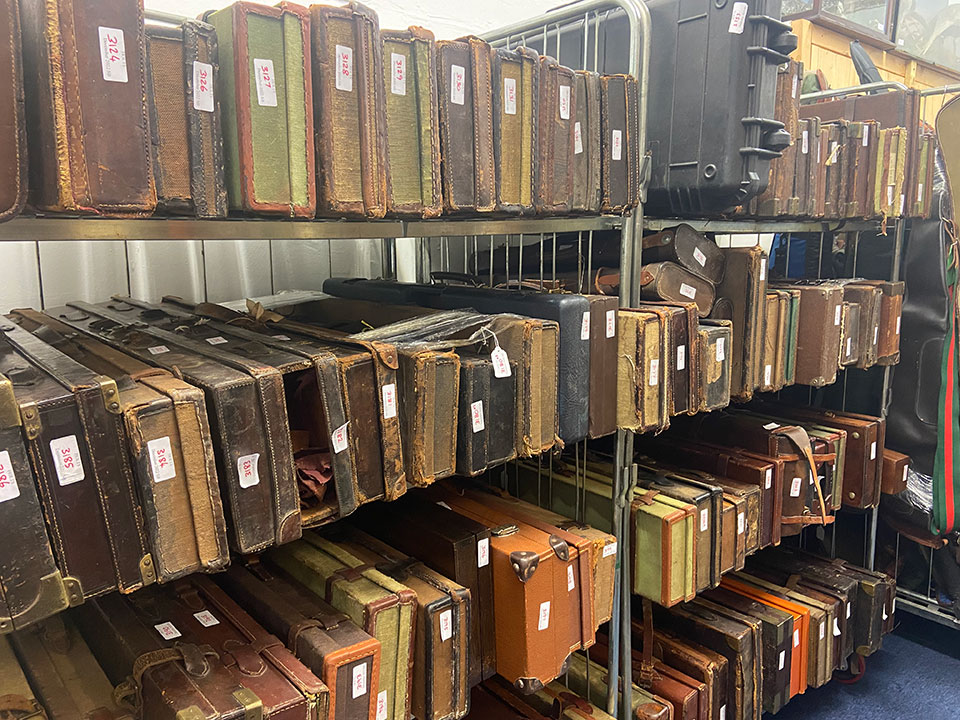
Published by Vintage Guns Ltd on (modified )

